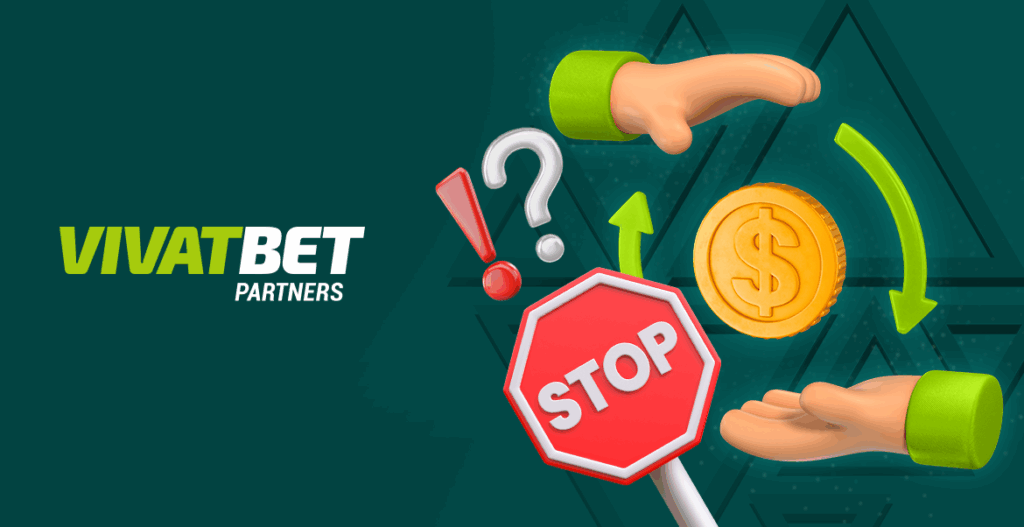What to Do When Affiliate Campaigns Stop Converting
29.07.2025
What to Do When Affiliate Campaigns Stop Converting
29.07.2025Even the best affiliate campaigns lose their effectiveness over time. You check the statistics and see: there are clicks, traffic is coming, but conversions are zero or significantly lower than before. If the campaign used to bring in 10–15 sales per day, and now it’s barely 2, that doesn’t always mean the end. It’s a signal to review your strategy and make changes.
One of the first reasons for a drop in conversions is tired or irrelevant traffic. If you’re bringing users from the same source but not updating your content, your effectiveness will inevitably decline. In addition, losing touch with your target audience can lead to a decline in trust. If your audience no longer sees value in your product or offer, they won’t buy.
Another common reason is market overheating. If many affiliates are promoting the same product (especially in the gaming or financial niche), the audience simply gets tired of similar offers. In such cases, even well-designed advertising may not work if the format or message is not updated based on previous experience.
Sometimes the decline is due to external factors. For example, in 2025, major updates to Facebook Ads and TikTok algorithms significantly affected CPM and ad visibility. Also, some programs, particularly in the vivatbet or crypto casino segment, began to revise their payment terms and filter traffic more strictly, which led to a loss of revenue.
How to increase affiliate conversions: proven steps to increase revenue
When affiliate campaigns are running but not delivering the desired results, it is important not only to increase traffic, but also to effectively convert it into profit. Sometimes, changing a few small elements is enough to see noticeable growth within the first week. For example, increasing conversion by even 0.5% with 500 clicks per day means 2–3 additional sales every day.
First, it is worth optimizing the page where you lead the user. To do this, you need to:
- • Simplify the landing page: minimize the number of actions the user must take to make a purchase.
- • Strengthen the CTA: make sure the call to action is visible and clear.
- • Increase page load speed: over 53% of users leave a site if it takes longer than 3 seconds to load.
- • Test colors and button placement: even replacing red with green can affect clickability.
After technical optimization, move on to working with content. Successful campaigns often win thanks to their emotional message:
- • Use social proof: real reviews, figures, screenshots of payments.
- • Add a timer or limited offer: the element of urgency stimulates decision-making.
- • Show an example of a successful user: “before and after” stories work great.
To achieve stable sales, it is important not only to retain the user, but also to follow up with them after the first contact. Email marketing remains effective:
- • Build a contact database through lead magnets or free guides.
- • Automate email chains with recommendations, promotions, and motivational messages.
- • Segment subscribers by behavior — this increases the chances of conversion by 1.5–2 times.
Remember that affiliate marketing is not just about “flooding traffic,” but also about the ability to adapt to your audience, look for weaknesses, and constantly test. Real growth comes when every click turns into real profit.
Affiliate marketing conversion rate: how to understand and improve your rate
The conversion rate is one of the most important indicators of effectiveness in affiliate marketing. If you have 1,000 clicks and only 10 sales, your conversion rate is 1%. But is that good? The average rate for most affiliate programs ranges from 0.5% to 3%, depending on the niche, traffic source, and type of offers.
To understand whether your results are really poor, you should first evaluate all the variables. Here are the main factors that affect the affiliate conversion rate:
- • Offer topic: sports betting has different metrics than home goods.
- • Traffic type: cold traffic from advertising is of lower quality than “warm” traffic from email newsletters.
- • Target audience: if you don’t meet the user’s needs, even the perfect offer won’t work.
- • Content quality: uninformative or formulaic text can reduce trust in the offer.
- • Technical factors: the page doesn’t load, poor UX, not adapted for mobile devices.
To increase the conversion rate, you need to systematically test:
- • A/B testing of headlines: changing one word can affect the CTR by 10–15%.
- • Visual options: change the cover of the video or image in the publication.
- • Presentation formats: try short texts, lists of advantages, video reviews.
- • Testing different offers: even within the same topic (e.g., casinos), one brand may perform better than another.
It is equally important to be able to interpret the numbers correctly. A conversion rate of 2% may be an excellent indicator for a high-ticket product, but a failure for inexpensive mass-market goods. Also pay attention to the time spent on the page, abandonment rates, and the number of returns — this will help you identify weak points in the funnel.
Successful partners constantly review their funnels and content. If something isn’t working, they don’t keep trying the same approach, but test something new. And this is the essence of stable income in affiliate marketing.
Conversion affiliate marketing: what actions affect the results the most
Conversion in affiliate marketing is not just about how many people clicked on the link. It’s about how many users ultimately performed the target action: registered, made a deposit, or made a purchase. In a highly competitive environment, especially in the betting or casino niche, every detail affects the result. Sometimes changing a single block on a landing page can increase effectiveness by 10–20%.
Before trying to “fix” low conversion, you need to identify where exactly the funnel is leaking. To do this, pay attention to:
- • CTR on advertising materials — how attractive your headlines and visuals are
- • Time on page — whether the user interacts with the content or leaves immediately
- • Actions after the click — whether they click the button, scroll, or leave the page
- • Mobile adaptation — over 60% of traffic in many niches comes from smartphones
To change the situation, it is not enough to simply change the banner or offer. A comprehensive approach is needed:
To do this, you need to:
- Analyze competitors: how they design content, what CTAs they use
- Rewrite the offer description, make it shorter, more concise, with an emphasis on benefits
- Add social proof: reviews, screenshots of payments, case studies
- Adjust the sequence of elements on the page (CTA above, timer below, etc.)
- Segment traffic and adapt content to specific groups
If a campaign isn’t converting, it’s not always a problem with the product itself. Often the problem lies in the presentation, the moment when the user sees the link, or the excessive number of barriers along the way. Testing and adaptation are the keys to stable growth, even in the most difficult niches. In the world of affiliate marketing, small details often make all the difference.
Average affiliate conversion rate: benchmarks that matter
In affiliate marketing, the concept of “conversion” is not just a dry indicator, but a true indicator of campaign effectiveness. It is the conversion rate that allows you to understand how well your content, offer, traffic channel, and the product itself “touch” the audience. But what numbers should be considered normal? What is the average conversion rate in affiliate marketing and what does it depend on?
In practice, this indicator can vary significantly. On average, the affiliate conversion rate ranges from 0.5% to 2%, but it all depends on the vertical, traffic source, sales funnel, and the product itself. For example, in niches such as finance or casinos, this rate can be 3–5% if the traffic is warm and the offer is attractive.
For example:
- • In the iGaming niche, when a user comes across an attractive welcome bonus, the conversion rate to registration is often 1.5–3%.
- • If the content is published on Telegram or TikTok with a personalized call-to-action, the conversion rate can reach 5–7%, especially for offers with no deposit bonuses.
- • In physical products affiliate marketing, for example, through Amazon or CPA platforms, the average rate is 0.5–1.5%.
To better understand what the overall rate consists of, it is worth breaking it down into stages. Conversion can mean:
- • Clicking on an affiliate link
- • Filling out a form (lead)
- • Registration
- • Deposit or purchase
Each of these stages has its own micro-level of conversion, and it is a sequential analysis that allows you to identify weak points in the chain. What affects the average conversion rate:
- • Targeting — a narrow and precise audience (for example, bettors aged 25–35 who actively bet on sports) gives a better response than the general masses.
- • Content — a simple banner today works worse than a reel with winning cases or a platform review with personal impressions.
- • Site speed and UX — if an affiliate site takes longer than 4 seconds to load or has unnecessary steps to register, up to 30% of potential conversions are lost.
For those who want to achieve a conversion rate of over 3%, here are some tips to help increase the average affiliate conversion rate:
- • Test different calls-to-action (CTAs) — for example, “Get a bonus” works better than “Register now.”
- • Include user reviews — real stories with results or wins.
- • Personalize content — address your audience in their language, use their needs
- • Shorten the funnel — fewer steps, more results
- • Regularly optimize advertising campaigns — change creatives, locations, budgets
It is also important not to compare your conversion with everyone at once — it is better to use your own data from previous periods as a benchmark, adapted to the same audience, traffic source, and type of offer. In many cases, even a +0.3% increase in conversion results in a significant increase in profit, especially when it comes to high traffic volumes.
How to get more conversions: proven methods for affiliates who don’t want to lose revenue
When conversion rates drop, there is no need to panic. Instead, it is important to clearly understand what actions can give a new impetus to growth. The right strategy is a combination of technical, content, and psychological techniques.
First, review the content component. Affiliate marketing is not just about links, but about persuasion. The following will help:
- • Updating landing page texts, taking into account new triggers, target audience pain points, or current promotions.
- • Adding video content — TikTok, Shorts, or Reels often convey the emotion of the product much better.
- • User stories or social proof — screenshots of payments, winnings, correspondence, etc.
Let’s not forget about UX. Sometimes the reason lies in the user’s path itself — it is worth simplifying the path to registration or reducing the number of steps to purchase:
- • Test forms: fewer than 3 fields often show better conversion.
- • Reduce page load time to 2-3 seconds.
- • Remove unnecessary pop-ups or distracting elements.
Next — A/B testing. It should not stop. If conversion has dropped by 30–50%, this is a signal for quick experiments:
- • Test new headlines with emotional appeal.
- • Try different CTAs: “Try now,” “Get a bonus,” “Get cashback” — they work differently in different niches.
- • Make changes to the design of the affiliate link block.
It is worth paying special attention to the audience. Sometimes the traffic source has simply burned out:
- • Launch retargeting for a warm audience that has not completed the action.
- • Try new sources: Telegram channels, thematic forums, YouTube Shorts.
- • Change your targeting: try dividing your audience into segments and selecting a separate offer for each one.
Also, don’t forget about psychology. Using scarcity and urgency (limited time/quantity) often adds 10–15% to the CTR:
- • “Today only: +150% to your deposit”
- • “13 bonuses left”
- • “Promo code valid until 23:59”
The results do not come instantly, but with a systematic approach and regular data analysis, the changes will be noticeable in 1–2 weeks. And remember: even the best affiliate campaigns sometimes stall — it’s part of the game. But whoever adapts first is the one who earns.
How to increase conversion in affiliate marketing: practical methods and modern approaches
For every affiliate marketer, increasing conversions is the main goal. In a competitive environment where every click has a price, it is important not only to attract traffic but also to monetize it effectively. Sometimes even a slight change in approach can result in a 20–30% increase in revenue. But what exactly influences the growth of the conversion rate in affiliate campaigns?
It’s worth starting with the audience. A successful campaign cannot be “for everyone.” The more clearly defined the user profile is, the more likely it is that they will click on the link and perform the target action. Advertising a casino to everyone who watches TikTok is pointless, but showing a winning strategy to players aged 25–35 from Peru is a relevant action.
To do this, you need to:
- • Create a detailed portrait of the audience: gender, age, interests, devices, region
- • Analyze which channels bring in “warmer” traffic (YouTube, Instagram, review sites, etc.)
- • Test interaction chains: click → landing page → registration → deposit
Another critical factor is the content itself. People respond not to buttons, but to emotions, stories, and trust. If your ad looks like a banner from 2008, the likelihood of conversion drops to zero.
Here are a few types of content that work better than others today:
- • Short videos with examples of winnings
- • Real reviews or screenshots of payouts
- • Explanations of bonuses in simple terms
- • Interactive formats: surveys, polls
- • Guides on “how to register and not lose your bonus”
In order to increase conversions, you need to competently build the structure of each element of interaction.
What needs to be optimized:
- • Landing pages — minimum distractions, one CTA, maximum loading speed
- • Headings — numbers, benefits, urgency (for example, “Get a 100% bonus only until 23:59”)
- • Action buttons — bright, noticeable, understandable (not “watch,” but “play now”)
- • Registration forms — the fewer fields, the better
- • Post-click steps — immediately lead the user to complete the target action
Also, don’t underestimate psychology. Conversion is the result of trust. The “social proof” effect works well: if a person sees that others have already taken advantage of the offer and are satisfied, they will join in too.
Elements of social proof that are worth adding:
- • Number of users/registrations in the last 24 hours
- • Reviews from real players (even anonymous ones)
- • Countdown timers until the end of the promotion
- • “Pick of the week” or “top offer” labels
Don’t forget about testing. There is no universal recipe — only through A/B splits can you find out what works. One creative can give a conversion rate of 0.7%, another — 2.5%, with the same budget.
What should be tested regularly:
- • Different ad texts
- • Different visuals or videos
- • Different offers (with/without deposit, different bonuses)
- • The location of elements on the landing page
- • Traffic sources (Facebook, Telegram, Google, push, etc.)
Separately — about trust. A user will not click on a link if it looks suspicious. Use:
- • Clean domains
- • Masking through a service such as Linktree or your own LP
- • Explanation of why you recommend the product
Ultimately, affiliate marketing is not magic, but rather working with analytics. If something isn’t working, you shouldn’t waste your budget, but rather figure out what exactly is going wrong in the chain. For example, perhaps your traffic is coming to a website that is poorly adapted for mobile devices, which drastically reduces conversion rates. Or users simply don’t understand what they will get a bonus for and what commission you will receive as a partner.
Recent posts

How to Build a Multi-Level Betting Affiliate Network — From Technical Setup to Performance Optimization
To make a big group of friends who sell for you in the casino you need to start well, see how good they do, and…

Top Sports Betting Affiliate Programs in Finland – Complete 2025 Guide
Finland rewards careful planning and clear user paths. Hockey and football spikes shape weekly intent across search and social. In this context, sports betting affiliate…

Top Affiliate Programs and Networks in Estonia – Best Estonian Affiliate Marketing Opportunities
Estonia's online economy moves fast: quick company setup, SEPA payments, and multilingual teams. Publishers monetize cross-border traffic in retail, travel, finance, and affiliate casino programs.…

